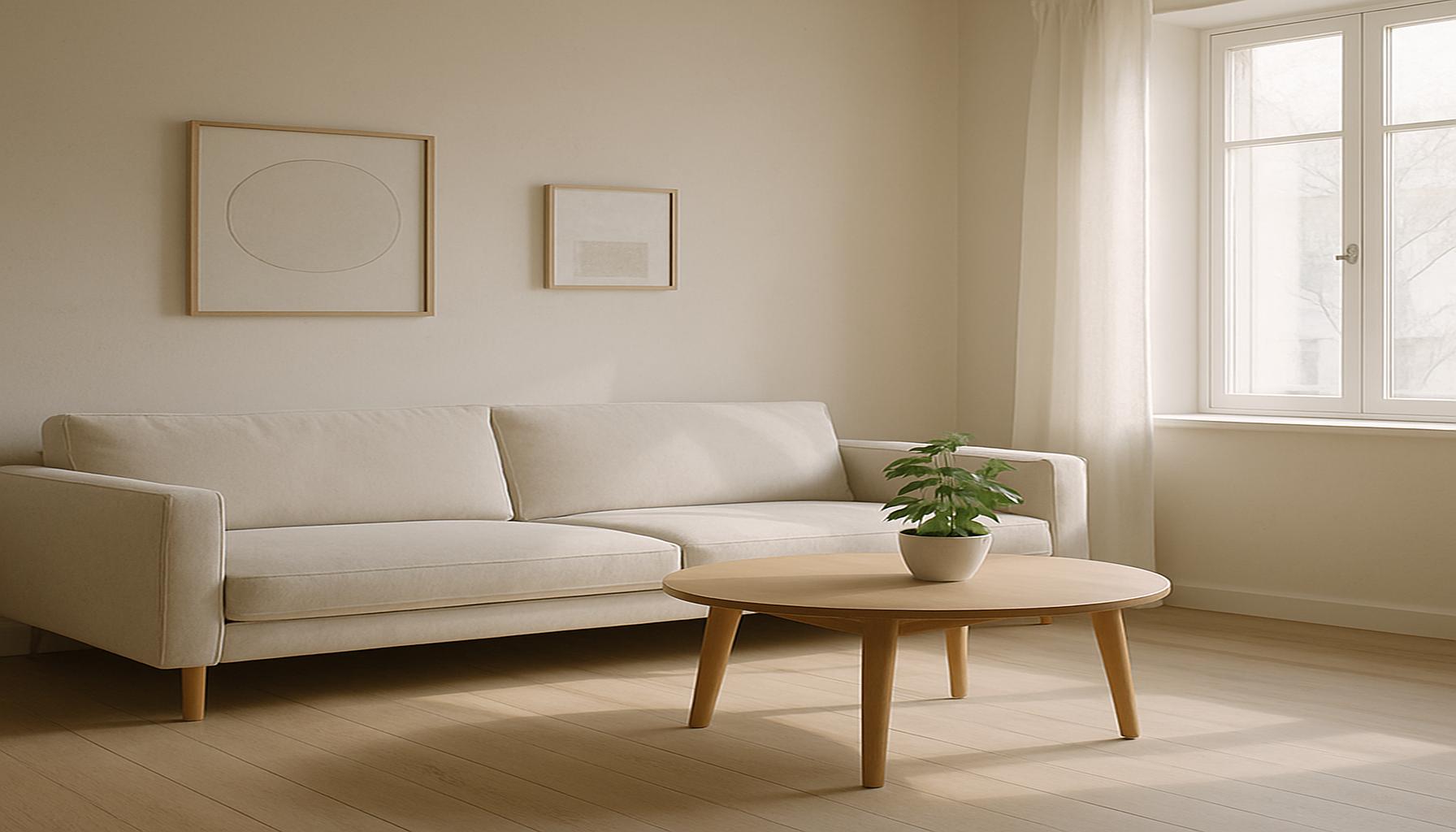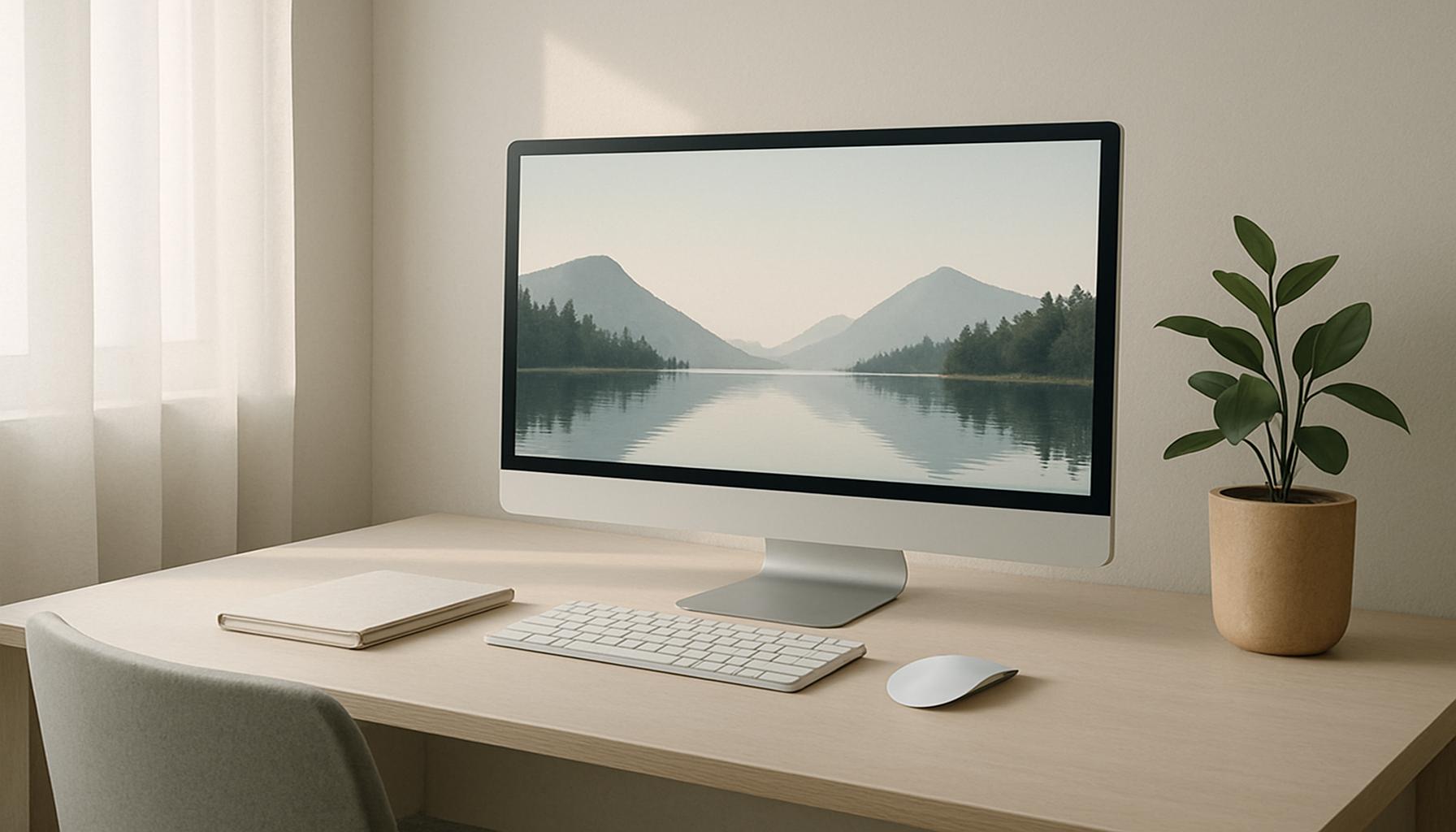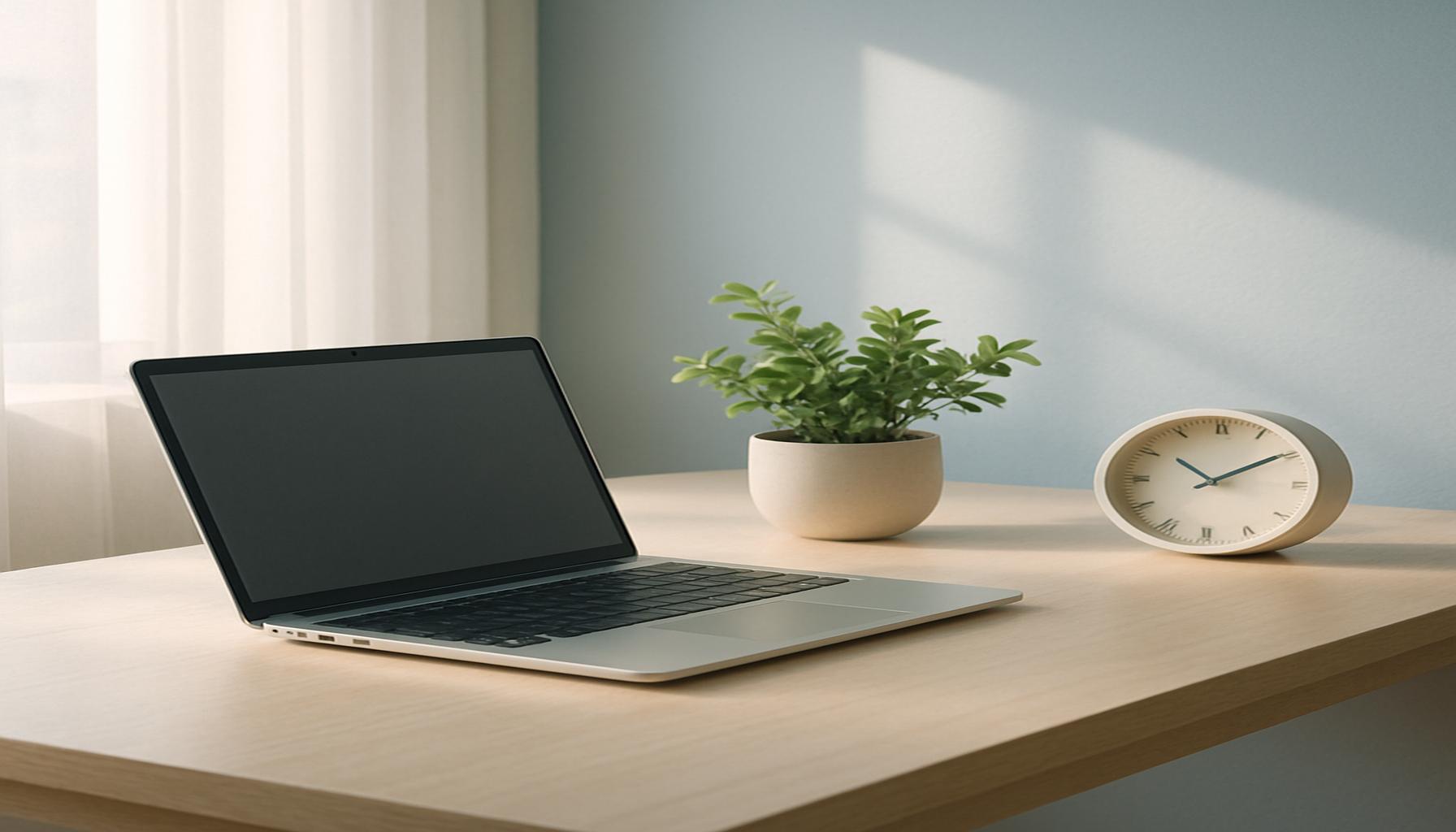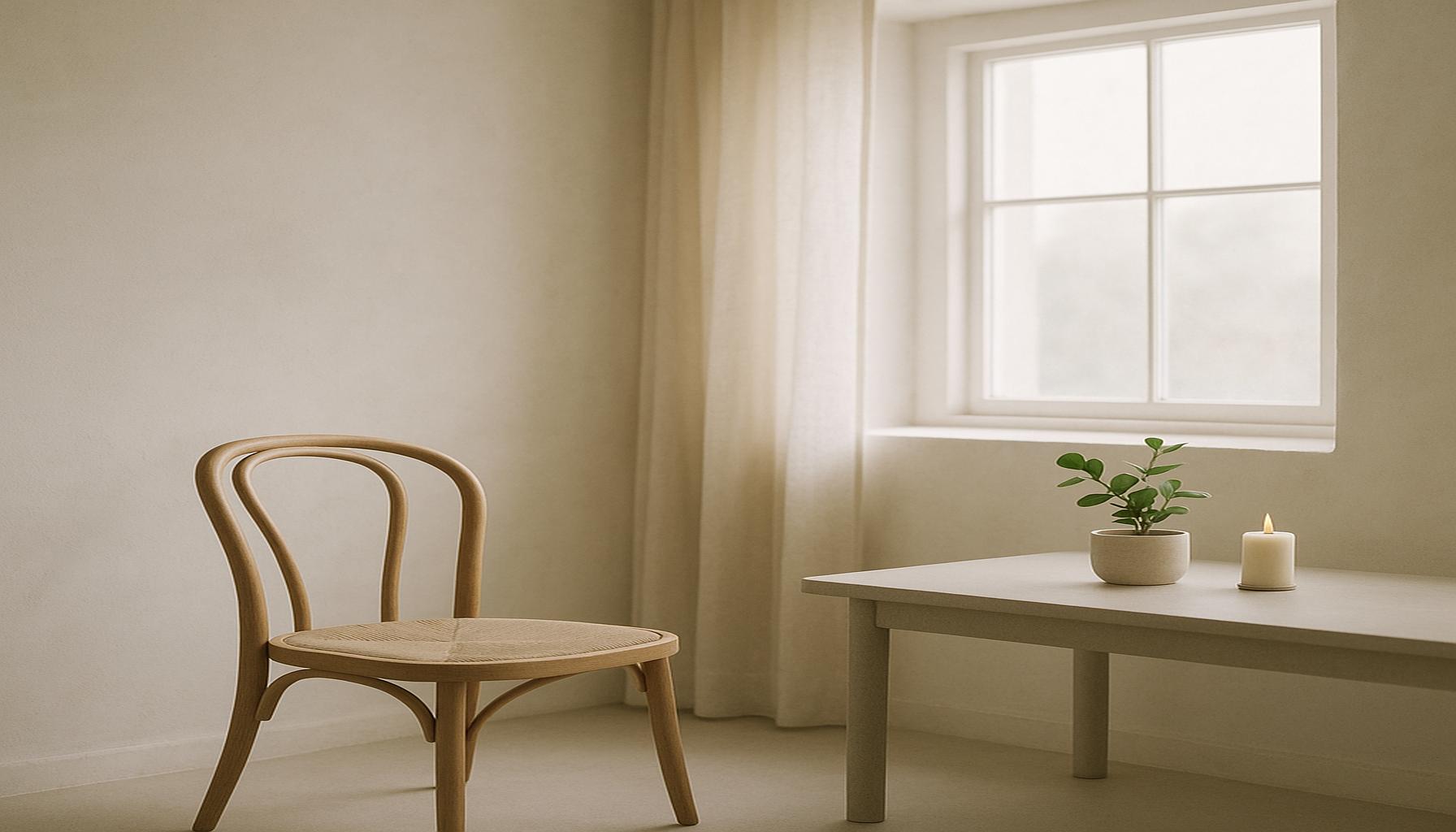The Beauty of Simplicity: How Selected Objects Can Create Serene Environments

The Allure of Simplicity in Design
In today’s fast-paced world, the concept of simplicity has become a refuge for many seeking peace and tranquility. Selected objects play a crucial role in crafting serene environments that promote relaxation and mindfulness. By focusing on essential elements, we can declutter both our physical space and our minds, allowing us to find a sanctuary in our homes and lives.
Embracing simplicity involves understanding how our surroundings affect our mood and well-being. It’s fascinating to observe how the architectural design of a space can influence our emotions. Minimalist homes, characterized by open layouts and fewer distractions, often evoke feelings of calm and focus. This intentional design invites a sense of order amidst the chaos of modern life. Consider the following elements that can enhance serenity:
- Natural Light: Emphasizing windows and open spaces to invite sunlight. Natural light not only brightens a room but has been shown to improve mood and cognitive function. Strategically placing mirrors can also help to bounce light around a space, enhancing the feeling of openness.
- Minimalist Decor: Choosing a few high-quality items over excessive decor. A well-placed sculpture or a beautifully designed chair can serve as an art piece while remaining functional. The Japanese philosophy of Wabi-Sabi celebrates authentic simplicity and the beauty in imperfection, offering inspiration in curation.
- Earthy Color Palettes: Utilizing colors that reflect nature, such as greens, browns, and soft blues, can create an inviting atmosphere. These colors evoke the tranquility of nature, allowing for restorative experiences indoors. Plants are a wonderful addition that enhance this dynamic, bringing elements of the natural world inside.
Furthermore, simplicity does not equate to emptiness; rather, it harmonizes space by promoting a sense of peace. For example, selecting a single piece of art can transform a room, creating a focal point that invites contemplation. This concept can often be seen in modern art galleries, where sparse display methods allow visitors to connect more deeply with each piece.
In this article, we will delve deeper into how the intentional choice of objects and design can cultivate serene environments. By examining the intersection of aesthetics and psychology, we will uncover the profound impact of beauty and simplicity on our daily lives. As we navigate through the nuances of designing tranquil spaces, you are encouraged to reflect on your surroundings and consider how they contribute to your own sense of well-being.
Join us on this exploration of the beauty of simplicity and its ripple effects on personal peace, productivity, and overall happiness. The journey towards creating your own serene space begins with a few thoughtful choices that resonate with you.
DISCOVER MORE: Click here to enhance your routine
Creating Calm with Thoughtful Selection
As we delve into the art of simplicity in design, it becomes clear that the selected objects within a space can dramatically alter the atmosphere. The magic of minimalism lies not just in stripping away excess but in the thoughtful selection of items that serve both aesthetic and functional purposes. By prioritizing a few meaningful pieces, we invite harmony into our environments—setting the stage for calmness and clarity.
Intentional Choices are foundational to crafting serene spaces. Each item you choose should contribute to a narrative that enhances tranquility. This might be a handcrafted vase, made by local artisans, that brings a touch of personality, or a cozy throw blanket that invites relaxation. As you sift through decor options, ask yourself: Does this object nurture peace, or does it add to the noise? Selecting items with intention fosters connection to your space, allowing you to curate an environment that resonates with your values.
Another essential aspect is the balance between function and form. Objects in our spaces should not only be visually appealing but also serve a purpose. For example, a multi-functional storage bench can keep your entryway organized while doubling as a seating area. This approach embodies the principle of “less is more,” where utility intersects with beauty, promoting a sense of order and calm within your living area. Consider the following categories when choosing objects for serene environments:
- Furniture: Look for pieces that combine modern aesthetics with comfort. Natural materials, such as wood or stone, imbue warmth and connection to nature. A well-placed armchair can invite relaxation with its ergonomic design, while a simple wooden table might foster family gatherings.
- Art and Decor: Emphasize quality over quantity. Selecting a small number of well-crafted items allows for impactful decor without overwhelming the senses. A single painting that inspires reflection or a striking sculpture can serve as a focal point, encouraging mindfulness as you engage with your space.
- Textiles: Soft fabrics bring warmth and comfort. Choose cushions, throws, and rugs in calming textures and colors. These layers add depth to a minimalist design, contributing to an inviting atmosphere without creating visual clutter.
In addition to the physical aspects of design, the psychological impact of simplicity plays a critical role in creating serene environments. Research indicates that our surroundings significantly influence our mental state. A minimalist approach has been linked to reduced stress levels and increased productivity. By limiting distractions and fostering clarity, a simplified environment acts as a catalyst for mindfulness and focus.
Ultimately, the beauty of simplicity lies in its ability to connect us with our surroundings, enabling moments of reflection and peace. As we examine the potent combination of selected objects and serene design, we recognize their power to shape our experiences and overall well-being. By adopting this thoughtful approach, you will be well on your way to cultivating your sanctuary amidst the demands of modern life.
The Beauty of Simplicity: How Selected Objects Can Create Serene Environments
In today’s fast-paced world, creating peaceful and calming spaces has become essential for mental well-being. One of the key principles in achieving this serene environment is the art of minimalism. By selectively choosing objects that resonate with tranquility, individuals can transform their living spaces into havens of relaxation. This section delves deeper into the transformative effect of curated simplicity through thoughtfully chosen decor and furnishings.
When we talk about simplicity, it isn’t merely about having less; it is about making room for what truly matters. Each object in a serene environment should evoke a sense of calm and connection. For instance, incorporating natural materials like wood or stone can enhance the feeling of groundedness, providing a harmonious balance with nature. The choice of colors also plays a vital role; soft, muted tones often lead to a soothing atmosphere that promotes easier relaxation.
Furthermore, the arrangement of selected items contributes significantly to the overall ambiance. Open spaces allow for better flow and minimize distractions, while strategic placement invites natural light and encourages mindfulness. By creating “quiet corners” with carefully chosen objects, such as a single piece of artwork or a softly curved chair, you provide the mind with a focal point, encouraging peaceful thought and reflection.
Ultimately, the journey toward achieving a serene environment is about aligning your space with your values and needs. Educating oneself on the principles of design that advocate for serenity can also be immensely beneficial. By honing in on these concepts, homeowners can effectively curate spaces that truly embody the beauty of simplicity.
| Advantages | Effects on Environment |
|---|---|
| Reduced Clutter | Creates visual harmony, leading to lower stress levels. |
| Mindful Selection | Encourages a deeper connection to the items in your space. |
By understanding these aspects of simplicity, you can enhance the effectiveness of your personal oasis, making it a space that is inviting and tranquil, devoid of unnecessary distractions. This journey of exploration into selective objects and their impact on tranquility is just the beginning—each step taken brings you closer to experiencing the true essence of a serene environment.
DISCOVER MORE: Click here to find out how minimalism can transform your life
Enhancing Peacefulness with Nature-Inspired Elements
In the quest for serene environments, integrating nature-inspired elements can significantly enhance the calming effect. Bringing the outside in not only beautifies spaces but also fosters a deep sense of connection with the natural world. Elements such as plants and natural light can transform an ordinary room into a tranquil oasis. The inclusion of indoor plants, for example, has been shown to improve air quality and reduce stress levels. This notion aligns with the principles of biophilic design, which advocate for the incorporation of natural elements into our living spaces to promote well-being.
When choosing plants, consider their size, care requirements, and aesthetic appeal. Large potted plants like the fiddle leaf fig can serve as statement pieces, while smaller succulents add delicate touches to shelves or windowsills. Additionally, utilizing natural light is vital in creating serene environments. Opt for sheer curtains that allow sunlight to filter through, casting gentle shadows that soften the overall aesthetic. Strategically placed mirrors can further enhance the effect by reflecting light and creating an illusion of spaciousness. This harmony between light and plants establishes an uplifting atmosphere, powerful enough to influence daily moods and perspectives.
Colors play a crucial role in setting the tone of a space, and a minimalist palette resonates beautifully with the concept of simplicity. Soft, muted hues derived from nature—such as earth tones, sky blues, and gentle greens—can instantly evoke feelings of peace and tranquility. A study conducted by the University of Exeter found that exposure to natural colors improves concentration and focus, leading to higher productivity levels. By selecting a harmonious color scheme, you successfully lay the groundwork for a calming backdrop that complements your chosen objects.
Moreover, the importance of negative space should not be overlooked. In minimalist design, the space surrounding objects plays a crucial role in enhancing their significance. Effective use of negative space helps the eye navigate the room without feeling overwhelmed, allowing each selected object to breathe and be appreciated for its individual beauty. A few well-placed stacks of books on a clean shelf or a single piece of art on a large wall can create a powerful conversation between emptiness and the object, enriching the overall aesthetic.
- Sound Elements: Consider incorporating sound elements such as water features or wind chimes. The gentle trickling of water or delicate chimes creates a serene auditory landscape that complements visual aesthetics, fostering relaxation and mindfulness.
- Personal mementos: Select a limited number of personal items or souvenirs that evoke positive memories. When displayed mindfully, these pieces can tell your story while maintaining a sense of simplicity.
- Scent: Utilize essential oils or scented candles to engage another sense. Subtle fragrances like lavender or eucalyptus can transform the ambiance of a room, promoting relaxation and desire to spend time in the space.
Ultimately, the harmonious blend of natural elements, carefully chosen colors, and a mindful approach to organization creates an environment where simplicity thrives. These choices enhance the essence of serenity, establishing spaces that encourage reflection, creativity, and a deep sense of well-being.
DISCOVER MORE: Click here to learn how minimalism can boost your productivity
Conclusion
The beauty of simplicity lies in its remarkable ability to transform our surroundings into sanctuaries of calm and introspection. As we have explored, selecting specific, thoughtfully curated objects can significantly enhance the serenity of our environments. By opting for nature-inspired elements, such as indoor plants and natural light, we invite the calming essence of the outdoors into our homes, nurturing a deeper connection with nature. This approach, rooted in biophilic design, not only beautifies our living spaces but also contributes to improved well-being.
A minimalist palette comprising soft, earthy tones plays a pivotal role in setting a tranquil atmosphere, reinforcing the concept that colors can influence our emotions and productivity. Coupled with the effective use of negative space, these design choices allow each object to shine, creating a harmonious dialogue between emptiness and presence. Furthermore, incorporating elements that engage the senses—be it soothing sounds, personal mementos, or comforting scents—deepens the experience of tranquility.
As you reflect on your own living spaces, consider the transformative potential of simplicity. Embrace the power of less by selecting items that resonate with you personally, enhancing your surroundings while fostering a serene atmosphere. In this journey towards creating serene environments, remember that simplicity is not just about minimalism; it’s about intentionality, mindfulness, and the beauty found in the meaningful connections we cultivate with the objects around us. Ultimately, by embracing simplicity, we create not only beautiful spaces but also nurturing environments that promote clarity, peace, and well-being.


